|
|
You are reading the older HTML site
Positive Feedback
ISSUE
58
msb technology Universal Media Transport as reviewed by Nicholas Bedworth
Introduction Just what are these "Universal Media Transports", anyway? Well, for starters, think of them as master digital audio and video sources that promise to "do everything"—like an electronic Swiss Army knife—but without, one hopes, the sharp edges. The rather enticing promise of these products is that regardless of the source modality (CDs, online streams, USB sticks, whatever), any "downstream" component such as a DAC or AVR will getting a pristine, bit-perfect copy of the original—free from any unwanted intermediate processing. What's more, the incoming bits will have essentially no significant jitter, which of course is of tremendous importance for DACs that couple their conversion clocks to S/PDIF timing. Presently, if one were to measure the jitter, electrical noise, etc., on the various outputs of many CD transports, USB-S/PDIF converters, Blu-ray players, and so forth, the results would, firstly, generally not be too impressive. Secondly, sound quality varies considerably, as we know, not only between products, despite their having almost identical specifications for distortion, linearity and so forth, but also even between the outputs of a given device. And the increasingly popular, but very convenient HDMI connectors usually show the worst results of all, with thousands of picoseconds of jitter and lots of noise. Guess how HDMI sounds when used for carrying digital audio? All this "confusion" at the source creates all kinds of problems everywhere else in the system. Of course, some products, such as USB-S/PDIF converters from Berkeley Audio Design or AudioPhilleo, as well as disc transports from TAD and few others, certainly do have excellent jitter performance, but these products only address two digital modalities, meaning ways of accessing digital content. What about all the rest? My somewhat frustrating experience is that even relatively expensive "media player" devices, attempting to deliver the promise of convenience and performance, often seem to end up being somewhat compromised. Sure, they may be easy-to-use, with attractive user interfaces and all that, but typically the sound usually leaves something to be desired: Some outputs are created more equally than others, or they lack support for the latest audio or video formats, and so on. On the other hand, it's only fair to point out that competence with CDs, SACDs, 384k files on USB drives, as well as with online streaming media or Blu-ray high-resolution, multichannel surround sound, is definitely a tall order. One of the newest offerings in the emerging universal source market comes from California-based MSB Technology—a company well-known over the past 25 years for exotic DACs and Class A monoblock amplifiers. They recently took up the challenge of making a statement universal transport, and to my reasonably critical ears, the results are very good indeed. Over the past several months, listening to all kinds of music from diverse distribution channels, it's become clear to me that out of a crowded field of contenders, MSB's newest creation goes a long ways towards delivering both the "creature features"—meaning the convenience and flexibility of mass-market consumer electronics products—as well as the state-of-the-art sound usually found only in the rarefied realm of truly high-end gear. And the UMT definitely makes it easy-to-use online streaming media, which is another eyebrow raiser, but one might as well face the reality of how much entertainment has changed in just the past four or five years. The new paradigm is clearly a global phenomenon. The pervasiveness of this transformation certainly became clear during my observations of daily life in a small town in central Nepal. My summertime "office" overlooks the peaceful Phewa Lake, with the lofty peaks of the Annapurna Sanctuary starting just 20 miles to the north; tigers, rhinos, crocs and elephants hang out in the south. Despite the natural splendor of this locale, there is broadband Internet connectivity available from several providers, and it's delivered via cable modem, Wi-Fi, or mobile phone USB modems. Take your choice. Walk around the local neighborhoods, and you'll see young villagers sitting around watching movies on feature-phones. The landlines don't work, but everything mobile is up and running quite well. And in the Manila airport a few days earlier, one could observe similar phenomena a few notches up the socioeconomic feeding chain. In this case, many 20-somethings—as well as the 50-somethings— were all using iPad2s for everything from catching the latest soap operas to those perennial time killers, card games and word puzzles. Wireless is king, that's for sure, and electronics designers better get used to it or they'll be left behind. Much of the world's population is going from nothing to smartphones and tablets in a single jump, without any laptops, wires or USB in between. And how long before online content streams can be just as good as those on today's physical media? Technologically, while such realities of the future are already here, depending on one's location: Consider the fact that my favorite hotel in Tokyo was apologizing for the fact that while their backhaul to the Internet was the normal 100 megabits, the distribution within the property was "only" 15 to 40 megabits. The MSB UMT is already getting ready for high-performance content delivery from almost any source, and transparently quick Internet is certainly already here in several major markets. The future might just come along sooner than we thought. The Source is the Goal While it seems logical that veteran designers would want to leverage their know-how and extend their commercial reach as all these trends sort themselves out in the marketplace, only a few have taken the plunge. If one's goal is building a high-end, universal digital source component, the range of technologies, protocols and interfaces that have to be supported these days is truly daunting. And how can this all be accomplished at a reasonable (by high-end standards) price?
The quick answer is that the MSB design team decided to combine a relatively generic OEM universal "player" core—derived from the popular Oppo 93—with an array of digital inputs (the proprietary MSB network to other MSB devices, along with generic USB, eSATA, and Ethernet LAN) as well as, in some cases, custom-designed, very high-performance digital outputs (MSB network, AES on XLR, S/PDIF on TOSLINK, BNC or RCA, surround audio on TOSLINK or RCA, and two HDMI audio-video connectors). Given the company's perfectionist attitudes, which include building 24-bit, high-speed, resistor-ladder DACs from scratch, such a solution might seem a bit out of character. But, after a moment's reflection, it's one of the few viable options for companies much smaller than, say, Samsung. Let Me Explain Human beings, being inherently proud if occasionally deluded sorts, usually assume that one's own way of doing something is naturally the best. This leads to the perpetual reinvention of wheels and endless repetition of events. In the domain of digital audio, dominated by energetic and creative males of the species, such atavistic tendencies run especially deeply, and usually intractably. An electronic engineer's equivalent of "all the children are above average"—exemplifying misplaced pride in positive attributes that simply cannot be—manifests itself in various ways. For example, an excellent analogue section, but a substandard USB interface, balky software, clumsy user interfaces, and myriad combinations of this ilk, deliver a mediocre consumer experience. But for the humbling act of licensing an appropriate component, driver or other subsystem from another designer, such problems might not be so prevalent. For special-purpose products such as DACs, the "system integrator" approach that combines one's core expertise with a licensed 3rd-party design can make sense, although of course it also may introduce problems of its own. However, think about the case of a universal media transport: It has to handle the decoding of multiple exotic video formats, spin up all kinds of discs, manage Internet protocols and domain name servers, security and rights management, high-resolution displays, memory sticks, motor controllers, and on and on. Furthermore, all the "smarts"—the intellectual property, software and logic—are encapsulated in massive, custom VLSI chips, as well as in firmware gate arrays that typically need to be updated from time to time. The performance of some of these subsystems also has to conform to various international specifications and market requirements. Very few smaller firms have the depth to tackle these critical but generic tasks, nor should they even try. In MSB's case, the Oppo 93 core is used to considerable advantage. The hundreds of accumulated man-years of development it embodies ensure that all the low-level details are handled with aplomb. This in turn allows MSB to concentrate its engineering "value add" on those critical areas that most transports don't do well at all, and also get a product to market quickly. For example, according to the UMT's designer, Dustin Semansky, rather than relying upon the low-level processing circuitry in the Oppo 93 board, he instead grabs the raw digital from the media (CD, USB thumb drive, etc.) and places it in a buffer memory. Thereafter, the digital data are transported through MSB-engineered gates and line drivers, without any additional processing or upsampling, to the outside world. All the audio streams, except for SACD, are handled in this manner. In the case of SACD, the decimation step (meaning the conversion of the 1 bit delta-sigma SACD data into standard PCM formats) is performed on a special MSB board connected to the Oppo "core". As a result, MSB can guarantee bit-perfect and low-jitter bit streams for all these formats, even up to 384 kHz, 32-bit samples, for those listeners who opt for MSB's new Pro I2S Network II. Up and Running Once out of the box, and after carefully removing the UMT from its black, protective cloth cover, the first order of business is attaching a 12 V DC supply. One of four available external supplies, ranging in price from $595 up to $4495, is connected up using the cable supplied. And for those ultra-purists who must use batteries, MSB even supplies optional adapters.
A quick peek under the lid of the UMT's powdery-white anodized lid reveals the results of MSB's engineering efforts. Elaborate mechanical and electrical enhancements go way above and beyond what most manufacturers could even dream about at typical consumer price points. For example, there's a large, custom-cut, solid copper ground plane, and the surrounding aluminum and steel monocoque case further reduces EMI, RFI and vibrations. There are even inverted cones at each of the four corners to help "ground" the case mechanically. Apart from Y-Pb-Pr component and composite analogue video on RCA connectors, the UMT's outputs are exclusively digital, which in addition to S/PDIF, AES, etc., include the MSB's own I2S digital network interconnect technology. The network, which uses CAT 6 cabling, is designed to deliver maximize performance, up to 384 kHz and 32 bits, as mentioned earlier, and simplifies integration with MSB DACs. Given that the UMT may often be used with electrically "noisy" flat-panel display, the two "pro" versions of the MSB I2S network, I and II, with isolated grounds, that should help keep reduce noise and jitter for critical applications. The overall design thus avoids line-level analogue audio circuitry or outputs that could pick up noise from the digital core. And of course having an outboard power supply—available in several levels of performance—further helps keep things "clean" with respect to clocks and ground planes. Next step, attach a high-resolution flat panel display via one of two HDMI outputs. While it's possible to play CDs and SACDs without one, it's really not the best arrangement, as many of the UMT's most interesting capabilities require the display for set up and routine operation. For example, attaching a display allows one to locate the content on any of the media (USB, eSATA drives, etc.) plugged into the UMT.
This is an especially nice touch, in that regardless of the origin of the audio or video program material, the titles and other track information are presented in a uniform manner. The details of how the track is stored and on what medium no longer influence the navigation, which is a big step forward, and of course text on a 42" 1080p flat panel is easy to read from across the room. A rather large, generic, remote control allows access to all the nooks and crannies of the UMT's rather attractive visual user interface. While not particularly elegant, at least the remote does have a backlight, and its operation is obvious enough. There is also a code category switch (with 3 positions) which allows one to avoid conflicts with other remote controls that may be nearby. With respect to the USB inputs, keep in mind that they're intended for "USB Mass Storage Class Bulk-Only Transport" devices, not computers. A wide range of compatible USB products includes thumb drives, card readers, and portable hard drives, provided their storage is formatted in FAT, FAT32 or NTFS, although some portable players, cameras, mobile phones might not work. The ports supply up to 1000 mA at 5 V, which is quite generous. And while we're on the topic of external storage, note the eSATA port assumes that the attached drive has its own power supply. The last integration step involves routing the digital outputs to a receiver, or more likely, an appropriate DAC. As alluded to earlier, MSB's own digital network output makes it exceptionally easy to connect to an MSB DAC. All that's required is the inexpensive CAT 6 cable, and you're done. For non-MSB DACs, there are the usual choices of S/PDIF on RCA, BNC, or TOSLINK, and AES on XLR; for the home theater enthusiasts, in addition to these, there's also digital surround-sound on TOSLINK and RCA. And for system integrators, on the rear panel there's an IR input, along with an RS-232 serial interface. At this point, all the conventional source modalities will be up and running. But what about all the others, such as USB, Wi-Fi, disk drives, etc.? The Wonders of Wi-Fi My initial selection of more exotic digital connectivity modalities was wireless Internet. The UMT includes a generic Wi-Fi adapter, which plugs into one of the two USB ports (the one right under the MSB logo on the front panel was used). After drilling down through a few on-screen menus, all one has to do is press "scan" to find available Wi-Fi routers, and instantly, the UMT found my household wireless LAN, correctly identified the encryption protocols, and asked for the appropriate security keys. Next up, after punching in my rather "strong" network password (if you use punctuation or other special characters, as one is well-advised to do, this will require a deep dive into the menus, but at least it only has to be done once). After the security key was entered, the display showed an appropriate IP dished out by the DHCP server on my router; pressing the Connection Test button resulted in an "OK" popping up on the screen. So far, so good. The UMT had connected to my LAN and the Internet without the slightest effort or problem. Compared to the wireless configuration struggles that used to be more or less routine, even a couple of years ago, this was an impressive stunt, and certainly demonstrates the wisdom of using mass-market components for such tasks. And in addition to Wi-Fi, one can also connect hardwired to a LAN, which, other things being equal, should deliver faster connections and better image quality. Software upgrades for the Oppo player are available online, and stream into the UMT through the Wi-Fi or Ethernet connection. Firmware updates for the MSB bits may be downloaded from the company Web site, and copied to a USB drive or CD for loading into the transport. CDs spun up quickly and started playing right away. However, sometimes discs using more exotic formats, such as DVD-Video, DVD-Audio, Blu-ray and SACD seemed to take forever before they were ready. Eventually, they'd "sync up" but it always seemed to take a while, with perhaps 30 seconds or more of thrashing around before everything settled down. Eventually, they'd sync up, but not without protest. Flowing Merrily Down the Stream If any more confirmation is needed of the global remake of entertainment, here's another example, a bit closer to home. Just the other day, at the huge electronics department in our Sears on Maui, it was interesting to hear a woman, perhaps 35, asking one of the rather knowledgeable salespersons about a particular TV set. Her first and only question was, "Does it work with Netflix?" Streaming is big. So, how about tempting fate once again, by connecting to an online streaming media source using Wi-Fi? Given the surprising and pleasing success so far, we might as well swing for the fences. With a little motoring around on the display, one soon arrives at a panel of online sources, including the industry pioneer, Netflix. Given a quick press of their icon, moments later a security code appeared, along with the instructions to go to a computer, log into my account, and enter the code (which, intelligently, is not case-sensitive). Less than two minutes later, back at the UMT and display, my next press of the Netflix logo brought up their familiar gallery of titles, a soporific, standard-definition nature documentary was selected, and onto the screen it came. Moving quickly to a high-definition title, The Thin Red Line, there was a noticeable improvement in picture quality, even over Wi-Fi. While either title would probably look better when played back directly from a DVD or Blu-ray disc, the results were certainly good enough for smaller flat panels, especially when viewed from a typical distance. Think of the integration required to pull this off. And yet everything worked as if this complicated collection of technology, protocols and commercial arrangements was the way it always had been. Total elapsed time from opening up the MSB UMT manual to page 40, and watching a movie: 8 minutes. This is truly amazing. How Good It Is Whether one is streaming Mulholland Drive over the Internet, enjoying 384k files of Beethoven piano sonatas from a USB drive, or even spinning ordinary CDs (remember them?), DVD-Audio or SACDs, the MSB UMT clearly delivers reference levels of sonic performance suitable for driving the most exalted electronics and listening rooms, while simultaneously embracing just about all of today's new digital lifestyles. The uniformity of all the digital outputs, with respect to noise and jitter, is readily apparent. Whatever differences one hears through the speakers relate to how the components downstream interpret the bit streams. Having an MSB UMT in one's arsenal makes it really easy to sort everything else out. How's that for a direct answer? Thus, the UMT is a natural for evaluating DACs. In addition to accepting just about every digital media format available, it outputs whatever format one could want, as long as it's not IEEE 1394 or FireWire. Then, it's just a matter of cycling each DAC's inputs to hear if there are any differences between them. After letting the UMT "warm up" for well over 1000 hours, by continually playing the XLO-Reference Recordings conditioning track on a CD, it was time for some critical listening. Both the popular Weiss DAC 202 and MSB's Signature Platinum DAC IV, with the corresponding MSB Signature Power Base were listened to, at length. These two DACs drove, directly, without a preamp, my collection of high-end, high-power, solid-state amps: the GTE Audio Trinity Class A monoblocks, Nelson Pass' XA 200.5 Class A monoblocks, and the Technical Brain BTL Class AB monoblocks, all playing through Wilson Sashas. The Weiss and MSB DAC both made beautiful music with the UMT, no doubt about it. The MSB DAC sounds better in a couple of key areas, although it should, given that it costs almost three times as much in the configuration used. On the other hand, it's always reassuring when a more expensive product does in fact deliver a better experience. This, unfortunately, is not always the case. The differences between the two DACs, while subtle and requiring both good ears and gear to discern, may illustrate how the general approach of each product's rather different design influences the ultimate sonic results. (Both the Weiss and the MSB DACs are the subject of upcoming "deep-dive" reviews; stay tuned). Of course, establishing the relationship of circuitry and chips to musical experience is fraught with difficulty, as we all know, but let's at least take a general look and see what might be happening. Starting with the UMT and Weiss, the DAC was set up in its normal operational mode, which is to extract the conversion clocking from whatever digital bit stream is active. The AES and S/PDIF sounded rather well indeed, while the TOSLINK was inferior, as usual. Regardless of the protocol, no matter how accurate the timing is when the signal departs the source, the UMT in this case, there's degradation in the cabling, interfaces and PLL clock extraction circuitry. The TOSLINK cable and drivers appear to spread out the waveforms more than regular copper or silver interconnect. So these results makes sense. When using the UMT with an MSB DAC, the MSB network sounded best. Very close behind were all the other inputs, but they sounded pretty much alike. This result is quite a bit different from what obtains from the Weiss, but it certainly seems reasonable, when one evaluates a fundamental difference in design between the two products. The MSB DAC, unlike the Weiss, normally operates in a way that completely uncouples conversion clocking from the timing inherent in the media bit streams. All the musical samples are dumped into a large buffer memory, and then clocked out by an internal reference clock that makes no attempt to sync up to the incoming embedded S/PDIF or AES timing. Thus, the transport and DAC sampling clocks may be completely independent. Of course, the large buffer introduces delay in the conversion of audio, so when watching movies, the MSB UMT can disable the "reclocking" just described so as to maintain perfect lip sync with the video. However, for reference audio performance, the reclocking mode is best, and even can be selected for use with non-video Blu-ray audio discs. In either case, even demanding listeners, and viewers, will be quite happy using the UMT with any of the popular high-end DACs. With respect to video performance, the two HDMI connectors on UMT route the bits directly to the screen; an enormous range of adjustments are implemented by the signal processing chipsets on the Oppo 93 core. Speculation on the Specs MSB likes to point to their design and implementation of low-jitter clocking and line drivers, reclocking samples from a buffer memory, and low power supply noise as being the fundamental design features behind the excellent performance of the UMT. The sonic results in my reference system certainly seem compatible with this explanation. It's not easy to obtain independent, quantitative data to evaluate these claims, and MSB is, at present, somewhat reluctant to publish their internal jitter measurements in any detail. However, one can at least perform some simple experiments with a 3rd-party device whose jitter performance has already been determined as the result of extensive phase noise testing. For example, the Audiophilleo1 USB-S/PDIF transport has very low measured phase jitter, something under 3 ps RMS over a 10 Hz to 100 kHz bandwidth. Firstly, one can compare what happens with the MSB UMT connected via a digital cable to the Weiss DAC 202's AES input, with the same bit stream going through an Audiophilleo to the Weiss' S/PDIF RCA input. Secondly, one can pair the UMT with an MSB DAC, using AES input, and again with the Audiophilleo on a S/PDIF input. One simply switches between either DAC's AES and S/PDIF inputs with the respective remote. In the case of the MSB UMT/Audiophilleo-DAC combination, it's hard to tell much difference between the two sources, UMT or Audiophilleo. When driving the Weiss with the UMT and Audiophilleo, it's pretty much the same story. This suggests to me that the jitter levels and noise levels of digital bit streams emerging from the MSB UMT are similar to those of the Audiophilleo, meaning, they're very low. Using other USB-S/PDIF transports, which definitely have much higher jitter levels than either the MSB or the Audiophilleo, it's quite easy to hear the differences. And, as a final cross-check, the MSB Web site does mention that 2 ps (without specifying a bandwidth) as a general design goal and "preliminary specification", so we're probably in the ballpark in this regard. Making It All Real The MSB UMT clearly stakes out new territory with respect to performance, consumer friendliness, and connectivity. Think of it as a universal digital "front end" that integrates just about every content source and transport protocol in common use today, and does so are reference quality levels. This is quite cool. While some recordings are more equal than others, and encoding techniques have their inherent characteristics and limitations, the UMT at least makes sure absolute fidelity—meaning low noise, jitter and bit-perfect transmission—is maintained between any source, and the downstream equipment. The MSB UMT manages almost all traditional and as well as many newly-arrived entertainment "carriers" from a single component and user interface: This by itself would constitute a major step forward. And by moving the "center of gravity" for many digital lifestyle scenarios back to familiar, easy-to-use, purpose-built consumer devices, away from the inherent hassles of any general-purpose computer, the approach taken by MSB goes a long ways towards letting consumers have it both ways: Very high-performance and unlimited content. While it took over ten years for this convergence of commercial interests, technology and consumer behavior to finally come together, it's here, it's real, and the benefits are very real indeed. Nicholas Bedworth
UMT
MSB Manufacturer’s Comments Myself and the team at MSB would like to thank Nick Bedworth for his thoughtful and in depth review of the MSB Universal Media Transport. Testing and writing about all the capabilities and performance of the UMT is certainly a daunting task . After doing a thorough job of going through all the sources and features, Nick goes beyond all this and analyzes the UMT’s reason for being and its position in the market place as a universal source. He really "gets it" and understands the product. It is important for the consumer to understand that this is a two channel transport and as such, the design and engineering are focused on the best possible sound quality into any DAC. Some DACs do not have the ability to reclock the incoming data to very lowest jitter levels so the UMT takes the burden off the DAC to do that making any DAC sound very good indeed. This can be especially true with older DACs. The UMT of course has MSB’s proprietary Network digital connection giving the UMT-MSB DAC interface hyper low levels of jitter and speed with MSB’s proprietary form of I2S. Nick correctly points out that the combination of the UMT and an MSB DAC is best. We are pleased that he feels the sound quality is exceptional in a product that has so many possible ways to play music media with all of them done well. It was an extensive engineering project by the MSB team to bring this product to market at an extraordinary performance level so again, we thank Nick for the recognition. Best regards, Vince Galbo National Sales Manager, MSB Technology Additional components used for the review: Sources: MSB Technology Universal Media Transport, MSB Technology Signature Platinum DAC IV, GTE Audio Trinity monoblock DAC; Audiophilleo1 USB-S/PDIF transport-processor; Toshiba Qosmio laptop; HP HDX 18 laptop; Seagate 1.5 TB external digital media storage. House clock: Grimm Audio CC-1 word clock. Amplifiers: GTE Audio Trinity monoblocks; Technical Brain TBP-Zero version 2 monoblocks, Pass XA 200.5 monoblocks. Speakers: Wilson Audio Specialties Sasha W/P. Display: Samsung 42" LCD 1080p flat panel display. Software: J. River Media Player 15. Cables: AudioQuest Wildwood single bi-wire speaker cables; AudioQuest Sky, Silent Source Audio Music Reference analogue interconnects; WireWorld Cable Platinum Starlight, WireWorld Cable Gold Starlight, AudioQuest Eagle Eye, AudioQuest Raven S/PDIF and AES/EBU digital interconnects; WireWorld Supernova 6 TOSLINK optical digital interconnect; WireWorld Cable Starlight, AudioQuest Carbon USB cables; Silent Source Audio Music Reference power cables. Accessories: Audience adeptResponse aR12-TS power conditioner; Red Wine Audio Black Lightning battery power supply; WireWorld Cable and Synergistic Research power distribution blocks. Room 1: 18' deep, 12' wide, 8' to 11' ceiling; room 2: 12' deep, 9'wide, 8' to 10' ceiling. Review component retail pricing: MSB Technology Universal Media Transport, $3995 plus an outboard desktop power supply, $595. Optional power supplies, designed to support both the UMT and an MSB DAC, include the MSB Platinum Power Base $2495, Signature Power Base, $3495 (used for this review) or the Diamond Power Base, $4495.
|
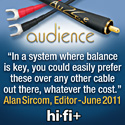
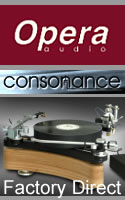
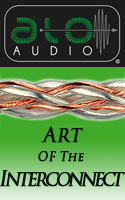



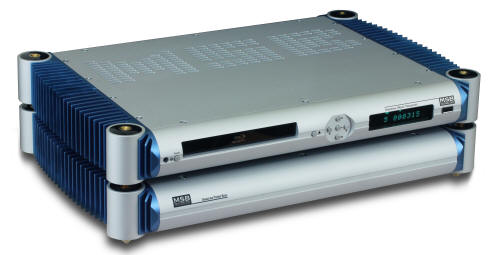
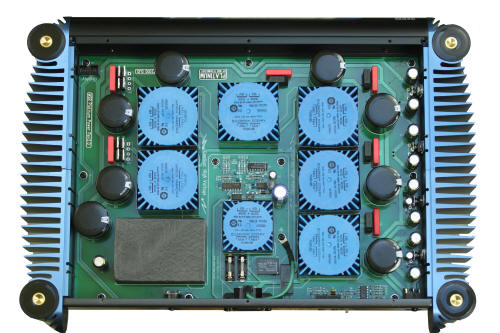
.jpg)